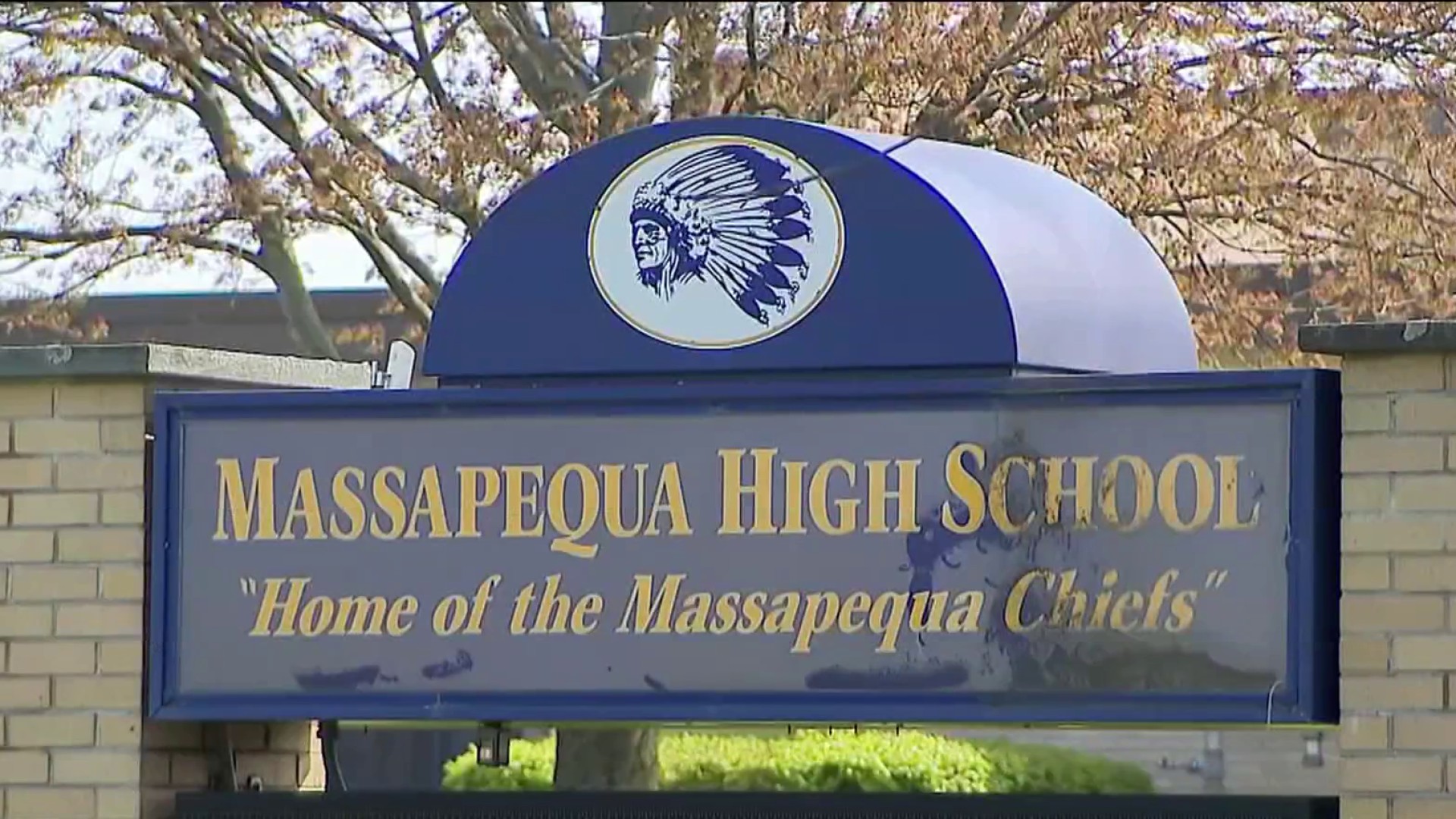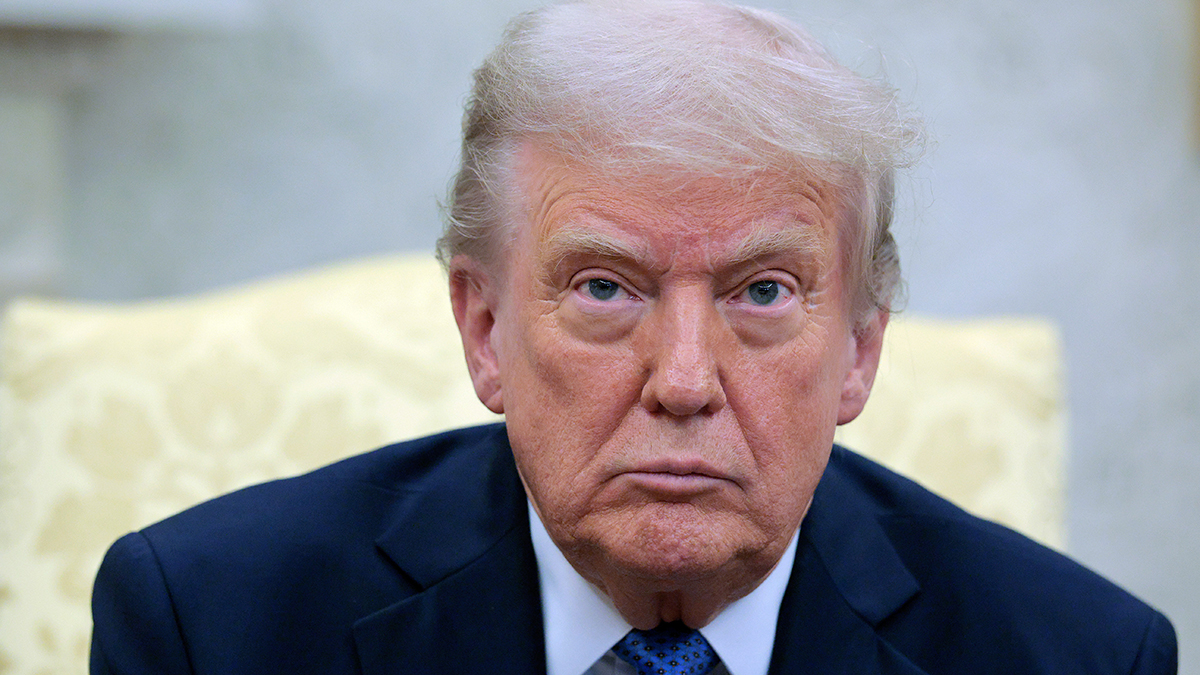Trump Admin Investigates NY's Tribal Mascot Funding Threat!
Trump Admin Steps In: NY Funding Threat Over Tribal Mascot Under Investigation!
Introduction: A Mascot Melee?
Alright folks, buckle up, because we're diving headfirst into a bubbling pot of political, educational, and cultural debate! It seems a seemingly local issue – a Long Island school district's Native American-themed mascot – has caught the eye of the federal government. The U.S. Department of Education has announced it's launching an investigation into whether New York education officials are playing unfairly by threatening to pull funding from a school district that refuses to ditch its "Chief" logo. Isn't that something? It's like a small pebble creating a ripple effect that reaches all the way to Washington! This could be a landmark case impacting many similar situations across the nation.
The Complaint: Who’s Calling Foul?
So, who threw the first punch in this mascot melee? That would be the Native American Guardian's Association (NAGA). This non-profit group champions the presence of Native American imagery in sports and mainstream culture, arguing that it's a celebration, not a degradation, of Native American heritage. According to their website, they see these logos as "beautiful artistry." NAGA filed a complaint arguing that New York's funding threat violates Title VI of the Civil Rights Act, which prohibits discrimination based on race, color, or national origin in programs receiving federal funding. It's a serious allegation, suggesting that the state's actions are not only misguided but potentially illegal. Could this be a misinterpretation of the law?
Trump's Two Cents: Taking to Truth Social
Never one to shy away from a good debate, former President Donald Trump also weighed in on the Massapequa school district’s mascot controversy. In a Truth Social post, Trump labeled the situation "ridiculous" and "an affront to our great Indian population" to force the Long Island district to change its "Chief" logo. Think about it – a former president commenting on a school mascot! It just goes to show how these issues can quickly escalate and become national talking points. His intervention adds another layer of complexity to the investigation and amplifies the already heated discussion.
The Department of Education's Role: Enforcing Civil Rights
What is Title VI?
The Department of Education's Office for Civil Rights (OCR) is the key player here. They are responsible for enforcing Title VI of the Civil Rights Act of 1964. Title VI ensures that federal funding recipients don't discriminate based on race, color, or national origin. In simple terms, if a school district or state education agency receives federal dollars, they can’t engage in discriminatory practices. But, does removing a mascot truly constitute discrimination? That's the core question.
The Scope of the Investigation
The investigation will focus on whether New York's education officials are indeed violating Title VI by unfairly targeting the Massapequa school district. The OCR will likely examine the motivations behind the funding threat, the evidence used to support the claim of discrimination, and the impact of the proposed changes on the school district and its community. This isn't just about a mascot; it's about the balance between cultural sensitivity, historical representation, and federal oversight.
The Massapequa School District: Sticking to Their Guns?
History of the "Chief" Logo
The Massapequa school district has used the "Chief" logo for decades. It's deeply ingrained in the school's history and identity. For many alumni and current students, it represents pride and tradition. But, traditions evolve, and what was once considered acceptable may now be viewed through a different lens. Is it time for Massapequa to reconsider its branding, or is it standing up for its heritage?
Community Response
The community is divided, as you might expect. Some residents strongly support keeping the "Chief" logo, arguing that it honors Native American culture. Others believe it's a harmful stereotype that perpetuates cultural appropriation. This internal conflict highlights the challenges of navigating sensitive cultural issues in a diverse society. How do you reconcile tradition with progress? Is it possible to respect both sides of the argument?
Native American Perspectives: A Complex Issue
Not a Monolithic View
It's crucial to understand that Native American perspectives on these types of mascots are not monolithic. Some Native Americans find them offensive and dehumanizing, arguing that they reduce complex cultures to caricatures. Others, like those affiliated with NAGA, believe that certain representations can be respectful and even celebratory. This internal debate within the Native American community underscores the importance of listening to diverse voices and avoiding generalizations.
The Harmful Effects of Stereotypes
Critics of Native American mascots argue that they perpetuate harmful stereotypes that can negatively impact Native American youth. These stereotypes can lead to feelings of shame, cultural alienation, and lower self-esteem. They also contribute to a broader misunderstanding of Native American history and culture. Is it worth risking these potential harms for the sake of tradition?
New York's Position: A Push for Change
Rationale for the Funding Threat
New York education officials have argued that the "Chief" logo and similar Native American-themed mascots create a hostile learning environment for Native American students and perpetuate harmful stereotypes. They believe that schools have a responsibility to create inclusive and respectful environments for all students. Are they overstepping their boundaries, or are they fulfilling their duty to protect marginalized students?
State-Level Initiatives
New York isn't alone in its efforts to address Native American mascots. Several states and school districts across the country have been grappling with this issue for years. Some have banned Native American mascots altogether, while others have adopted policies that require schools to consult with local tribes before using Native American imagery. This reflects a growing awareness of the potential harm caused by these types of representations.
Legal Precedents: Looking to the Past
Similar Cases
This isn't the first time a school mascot has sparked legal action. There have been numerous cases involving Native American mascots, as well as other controversial symbols. These cases often hinge on questions of free speech, cultural sensitivity, and the potential for harm to students. Studying these precedents can provide valuable insights into the legal arguments and potential outcomes in the Massapequa case.
Key Legal Arguments
Key legal arguments in these cases often revolve around the First Amendment (free speech), the Fourteenth Amendment (equal protection under the law), and Title VI of the Civil Rights Act (discrimination). Courts must weigh the school district's right to express itself against the rights of students to a safe and inclusive learning environment. It's a delicate balancing act.
The Broader Implications: More Than Just a Mascot
A National Trend
The Massapequa case is just one example of a larger national trend. Across the country, schools, sports teams, and other organizations are re-evaluating their use of Native American imagery. This reflects a growing awareness of the importance of cultural sensitivity and respect for marginalized communities. We are seeing a shift in how we represent and acknowledge different cultures in our society.
Impact on Other Schools
The outcome of the Department of Education's investigation could have significant implications for other schools and organizations that use Native American mascots. A ruling in favor of the Native American Guardian's Association could embolden other groups to challenge similar mascots, while a ruling against them could set a precedent that allows schools to continue using these symbols. The ripple effect could be felt across the nation.
Possible Outcomes: What's Next?
The Range of Options
The Department of Education has several options. They could find that New York's actions violate Title VI and order the state to cease its funding threat. They could also find that there is no violation and dismiss the complaint. Alternatively, they could mediate a resolution between the parties, encouraging the school district and the state to find a compromise. The decision could range from completely overturning the state decision to fully endorsing it.
Negotiation and Compromise
Perhaps the best outcome would be a negotiated settlement that addresses the concerns of all parties involved. This could involve the school district working with local Native American tribes to develop a more respectful and culturally appropriate mascot. It could also involve the state providing resources to help schools educate students about Native American history and culture. A collaborative approach could provide a win-win solution.
The Role of Education: Promoting Understanding
Teaching Cultural Sensitivity
Ultimately, the goal should be to promote understanding and respect for all cultures. Schools have a vital role to play in this process. By teaching students about Native American history, culture, and perspectives, they can help to dispel stereotypes and create a more inclusive learning environment. This is an investment in the future.
Dialogue and Discussion
Creating opportunities for dialogue and discussion is also essential. Students, teachers, and community members should be encouraged to share their perspectives and engage in respectful conversations about sensitive cultural issues. This can help to bridge divides and build stronger communities. Open communication is the key.
Conclusion: A Crossroads for Cultural Representation
The Trump administration's investigation into New York's funding threat over the Massapequa school district's "Chief" logo is more than just a local dispute. It's a microcosm of a larger national debate about cultural sensitivity, historical representation, and the role of government in regulating school policies. The outcome of this investigation will have significant implications for schools and communities across the country. **Whether the mascot stays or goes, the underlying goal should always be to foster respect, understanding, and inclusivity for all.** The core takeaway? We live in a society constantly grappling with how to balance tradition, respect, and progress.
Frequently Asked Questions
Here are some frequently asked questions about the situation.
- Q: What is Title VI of the Civil Rights Act?
- Q: Why is the Native American Guardian's Association involved?
- Q: What are the potential consequences for the Massapequa school district?
- Q: How do Native American tribes feel about Native American mascots?
- Q: What can schools do to address concerns about Native American mascots?
A: Title VI prohibits discrimination based on race, color, or national origin in programs and activities receiving federal financial assistance.
A: The NAGA supports the use of Native American imagery in sports and mainstream culture and believes the "Chief" logo is a respectful representation.
A: If the Department of Education finds that New York is violating Title VI, the state could be forced to withdraw its funding threat, or the school might have to change the mascot.
A: There is no single Native American perspective. Some find them offensive, while others believe they can be respectful, depending on the context.
A: Schools can consult with local tribes, educate students about Native American history and culture, and consider alternative mascots that are more inclusive and respectful.

